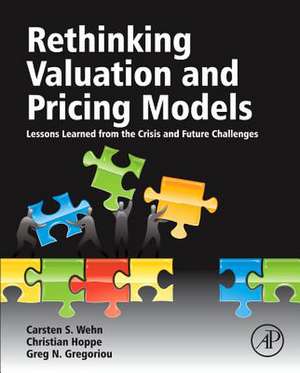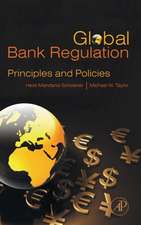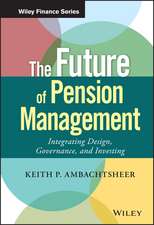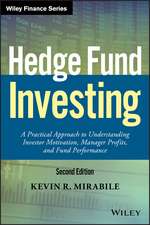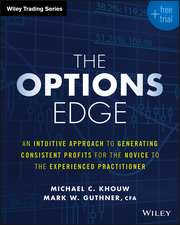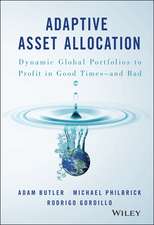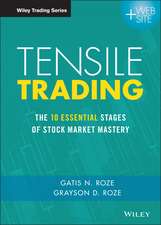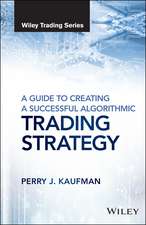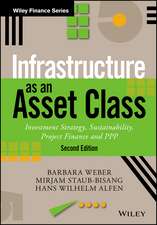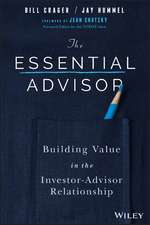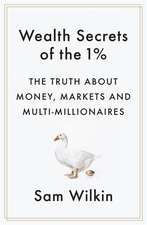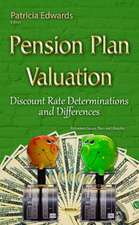Rethinking Valuation and Pricing Models: Lessons Learned from the Crisis and Future Challenges
Editat de Carsten Wehn, Christian Hoppe, Greg N. Gregoriouen Limba Engleză Hardback – 12 noi 2012
- Highlights pre-crisis best classical practices, identifies post-crisis key issues, and examines emerging approaches to solving those issues
- Singles out key factors one must consider when valuing or calculating risks in the post-crisis environment
- Presents material in a homogenous, practical, clear, and not overly technical manner
Preț: 430.96 lei
Preț vechi: 579.82 lei
-26% Nou
Puncte Express: 646
Preț estimativ în valută:
82.47€ • 89.55$ • 69.28£
82.47€ • 89.55$ • 69.28£
Carte tipărită la comandă
Livrare economică 15-29 aprilie
Preluare comenzi: 021 569.72.76
Specificații
ISBN-13: 9780124158757
ISBN-10: 0124158757
Pagini: 652
Ilustrații: illustrations
Dimensiuni: 191 x 235 x 43 mm
Greutate: 1.45 kg
Editura: ELSEVIER SCIENCE
ISBN-10: 0124158757
Pagini: 652
Ilustrații: illustrations
Dimensiuni: 191 x 235 x 43 mm
Greutate: 1.45 kg
Editura: ELSEVIER SCIENCE
Public țintă
Addresses issues relevant for upper-division undergraduates, graduate students, and professionals worldwide working in:- asset management
- trading
- risk control of banks and insurance companies
- consultancy firms
- auditing
- regulation
- applied mathematics and finance
Cuprins
40 original chapters divided into these sections:
1. Review of Traditional Approaches
2. Valuing Equities and Equity Derivatives--Calculating Risks
3. Valuing Interest Rate Derivatives and Debt Products--Calculating Risks
4. Valuing Hybrid Products, Alternative Investments--Calculating Risks
5. Investment Strategies and Asset Management--Combining the Results
6. Putting a Global Perspective on New Valuation Aspects
1. Review of Traditional Approaches
2. Valuing Equities and Equity Derivatives--Calculating Risks
3. Valuing Interest Rate Derivatives and Debt Products--Calculating Risks
4. Valuing Hybrid Products, Alternative Investments--Calculating Risks
5. Investment Strategies and Asset Management--Combining the Results
6. Putting a Global Perspective on New Valuation Aspects
Recenzii
"This reference is for financial professionals and advanced students and scholars working in asset management trading and risk control of banks and insurance companies. It looks at tensions revealed by the financial crisis between classical, well-established models and emerging issues in valuation models, derivatives pricing, risk calculation, and managing portfolios." --Reference & Research Book News, December 2013"This book
in a comprehensive way the influences and impacts of past crises. After guiding the reader through several investment styles and asset classes, the editors can present a deep comparison of governmental regulation on the one side and markets' tendencies toward self-regulation on the other. Their analytics identify leading indicators of future crises. A must-read for every financial market participant." --Christoph D. Kauter, Trigon Equity Partners
"In both our personal and professional lives, crises stimulate serious soul searching. The Global Financial Crisis was bound to have this effect on financial risk management. Rethinking Valuation and Pricing Models: Lessons Learned from the Crisis represents a major contribution to the collective soul searching currently under way in the world of quantitative finance. Particular attention is paid to the need for improved treatment of "higher order risks" such as basis risk, counterparty default risk, the instability of implied correlations and the shifting credit quality inherent in many interest rate indices. Also addressed is the realization that some risks are different in kind from those reflected in daily fluctuations of prices and rates (essentially the difference between risk and uncertainty in the Frank Knight sense). While not a volume for the quantitatively faint of heart, this book represents a significant contribution to the continuing reassessment of what we know about risk and how to quantify it." --David M. Rowe, David M. Rowe Risk Advisory
in a comprehensive way the influences and impacts of past crises. After guiding the reader through several investment styles and asset classes, the editors can present a deep comparison of governmental regulation on the one side and markets' tendencies toward self-regulation on the other. Their analytics identify leading indicators of future crises. A must-read for every financial market participant." --Christoph D. Kauter, Trigon Equity Partners
"In both our personal and professional lives, crises stimulate serious soul searching. The Global Financial Crisis was bound to have this effect on financial risk management. Rethinking Valuation and Pricing Models: Lessons Learned from the Crisis represents a major contribution to the collective soul searching currently under way in the world of quantitative finance. Particular attention is paid to the need for improved treatment of "higher order risks" such as basis risk, counterparty default risk, the instability of implied correlations and the shifting credit quality inherent in many interest rate indices. Also addressed is the realization that some risks are different in kind from those reflected in daily fluctuations of prices and rates (essentially the difference between risk and uncertainty in the Frank Knight sense). While not a volume for the quantitatively faint of heart, this book represents a significant contribution to the continuing reassessment of what we know about risk and how to quantify it." --David M. Rowe, David M. Rowe Risk Advisory
